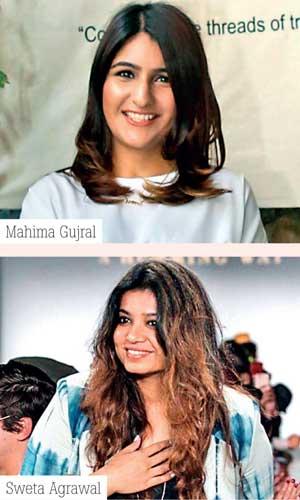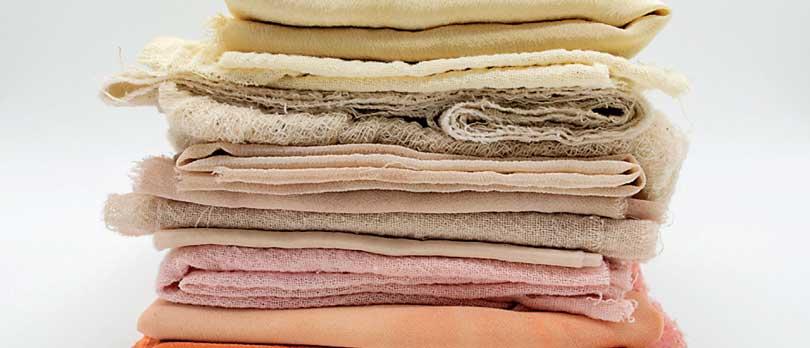Reply To:
Name - Reply Comment

 In an era where sustainability and conscious consumerism are gaining prominence, the world of fashion is undergoing a remarkable transformation. Traditional fabrics like silk and wool are being challenged by innovative and eco-friendly alternatives such as hemp and bamboo.
In an era where sustainability and conscious consumerism are gaining prominence, the world of fashion is undergoing a remarkable transformation. Traditional fabrics like silk and wool are being challenged by innovative and eco-friendly alternatives such as hemp and bamboo.
Sustainable materials are not only redefining the clothing racks but also shaping the future of fashion in myriad ways. The fashion industry, known for its fast-paced trends and wasteful practices, is finally embracing a more sustainable approach. As a wellness enthusiast and podcaster, it's crucial for me to celebrate these innovations and continue advocating for a more ethical and environmentally friendly fashion industry.
 Hemp and bamboo, once considered unconventional choices, have emerged as frontrunners in this sartorial revolution. Hemp, a versatile plant known for its strength and durability, requires minimal water and pesticides to grow. Its fibres are not only robust but also biodegradable. Bamboo, on the other hand, is a rapidly renewable resource that grows abundantly without the need for harmful chemicals. “Bamboo fibres are soft, breathable, and naturally anti-bacterial, making bamboo clothing a comfortable and healthy choice for consumers. Hemp and bamboo have been utilised through various methods to create clothing, accessories and footwear. They can be woven, knitted and blended with other materials,” says Deepa Goel, Founder, Siddh Couture. By using these materials, fashion brands are not only reducing their ecological footprint but also encouraging a more conscious consumption culture.
Hemp and bamboo, once considered unconventional choices, have emerged as frontrunners in this sartorial revolution. Hemp, a versatile plant known for its strength and durability, requires minimal water and pesticides to grow. Its fibres are not only robust but also biodegradable. Bamboo, on the other hand, is a rapidly renewable resource that grows abundantly without the need for harmful chemicals. “Bamboo fibres are soft, breathable, and naturally anti-bacterial, making bamboo clothing a comfortable and healthy choice for consumers. Hemp and bamboo have been utilised through various methods to create clothing, accessories and footwear. They can be woven, knitted and blended with other materials,” says Deepa Goel, Founder, Siddh Couture. By using these materials, fashion brands are not only reducing their ecological footprint but also encouraging a more conscious consumption culture.
International Movement
Numerous fashion brands and designers are leading the charge towards a greener fashion industry by championing hemp, bamboo, and other sustainable fabrics. Patagonia, a well-known outdoor apparel brand, has incorporated hemp into their clothing line due to its exceptional durability and minimal environmental impact. Fashion designer Stella McCartney has also been a vocal advocate for sustainable fashion, using bamboo-based materials in her collections. These pioneers are not only setting trends but also inspiring other industry players to rethink their materials and practices. Mahima Gujral, founder of conscious fashion label SUI based in Singapore and India said on my podcast that her label is particular about where the fabric comes from. "While working with handlooms made out of organic cotton or often indigenous cotton from India, we make sure that our textiles fall into that form when they’re handmade. They have lower carbon emissions. We try to work with dyes that are either azo-free or herbal dyes,” she told me.
Dr Amanda Parkes, fashion technologist and Chief Innovation Officer at Fashion Tech Lab and Pangaia, talked to me about a tactile connection. “Think about the things that are touching your skin and the things that you interact with daily, your clothing, for instance. It's a very big part of what we consider in terms of our synesthesia, what we touch, how we feel. As someone who is truly passionate about textiles, I find that it's something that influences our mood in a way that we don't truly recognise. It's not directly connected to sustainability, but in that sense, we are essentially composed of natural fibres. And fibres that have been refined from natural materials do inherently elicit a better physical response from us,” she said on my podcast.
 Ecological and Consumer Benefits
Ecological and Consumer Benefits
One of the most significant advantages of sustainable natural fibres is their low impact on the environment. Conventional textile production relies heavily on water-intensive crops and harmful chemicals, contributing to pollution and habitat destruction. In contrast, hemp and bamboo cultivation requires little to no irrigation and fewer pesticides, preserving water resources and promoting biodiversity. Furthermore, these fabrics possess exceptional durability.
Hemp fibres, for instance, are stronger than cotton, ensuring that hemp clothing lasts longer and reduces the frequency of replacements. This durability not only saves consumers money but also minimises the amount of clothing ending up in landfills—a critical concern in today's throwaway culture. Designer Sweta Agrawal, Creative Director at A Humming Way advocates for the versatility of bamboo. “The resulting material is remarkably soft against the skin while boasting impressive tensile strength. This unique combination enhances durability and provides newfound freedom in designing and draping garments with finesse.”
Moreover, embracing sustainable fabrics aligns with the broader ethos of mindfulness and conscious living. Consumers are becoming more aware of the environmental and social impacts of their choices, demanding transparency and ethical practices from the brands they support. The popularity of sustainable fabrics in fashion meets this demand.

Challenges and Future Outlook
While the adoption of hemp, bamboo, and other sustainable fabrics is promising, challenges still exist. The fashion industry is deeply entrenched in conventional practices, and transitioning to more eco-friendly materials requires significant effort. Sourcing and processing these fabrics on a larger scale while maintaining quality and affordability can be a hurdle for many brands. However, as demand grows and technologies evolve, these challenges are likely to be mitigated. By highlighting the impact of these materials and the trailblazers behind their adoption, creators and consumers like you and me contribute to a brighter, greener future for fashion.
